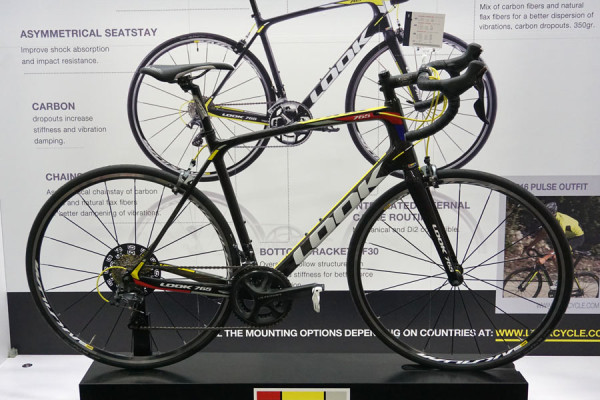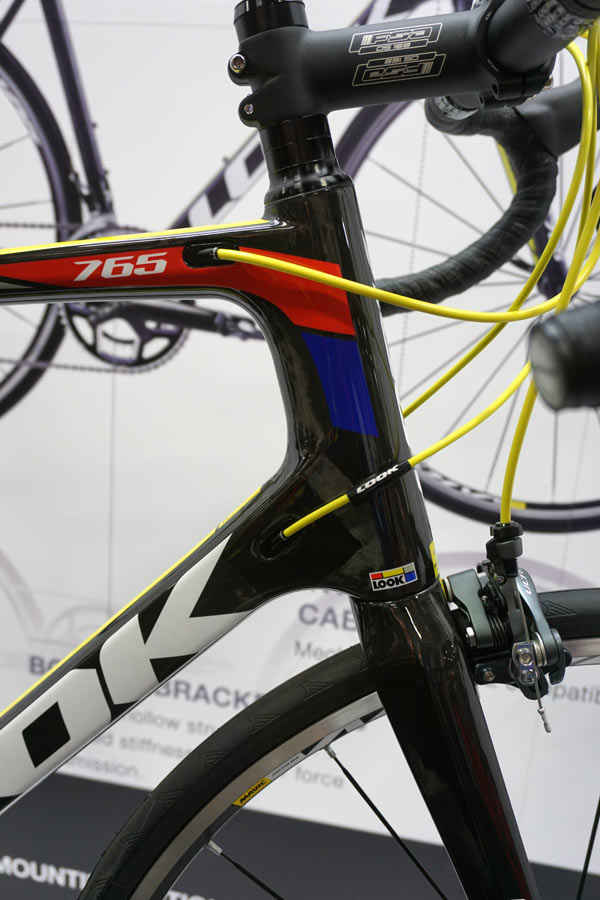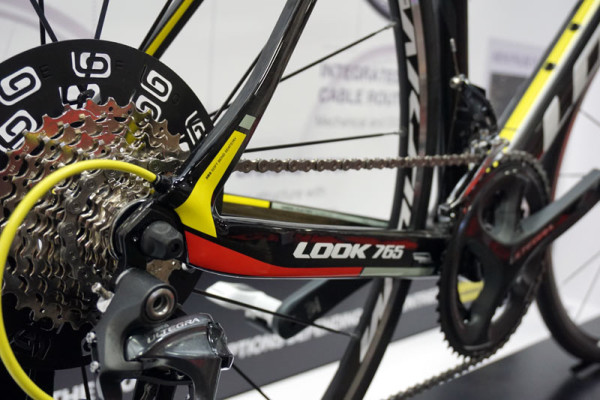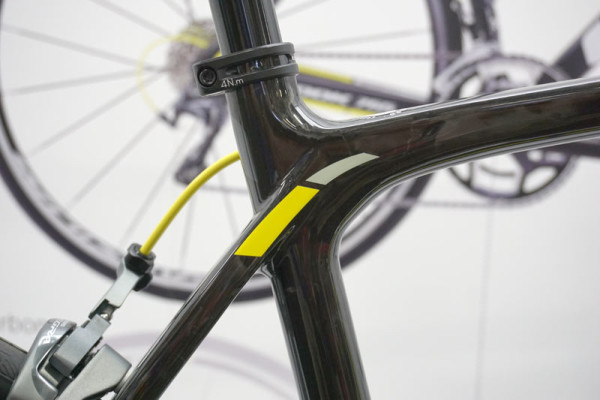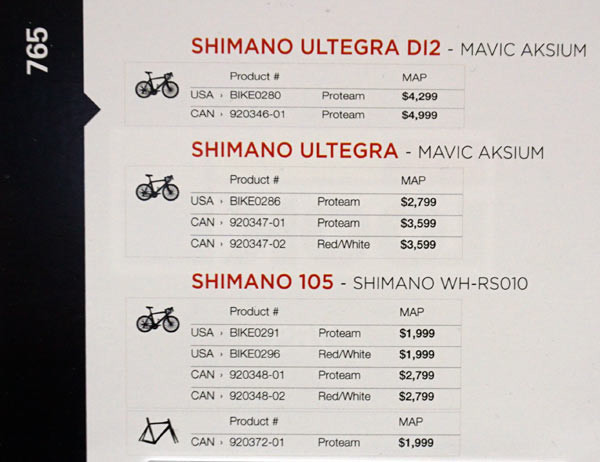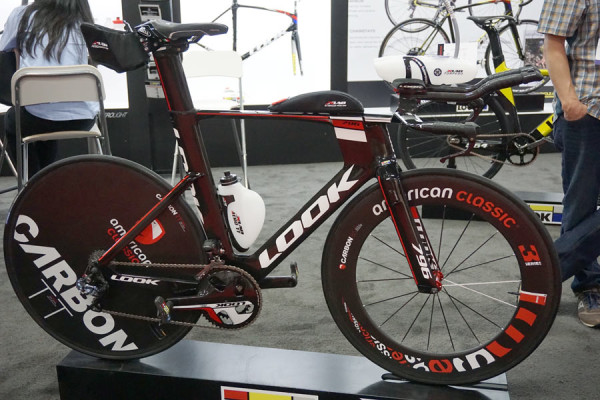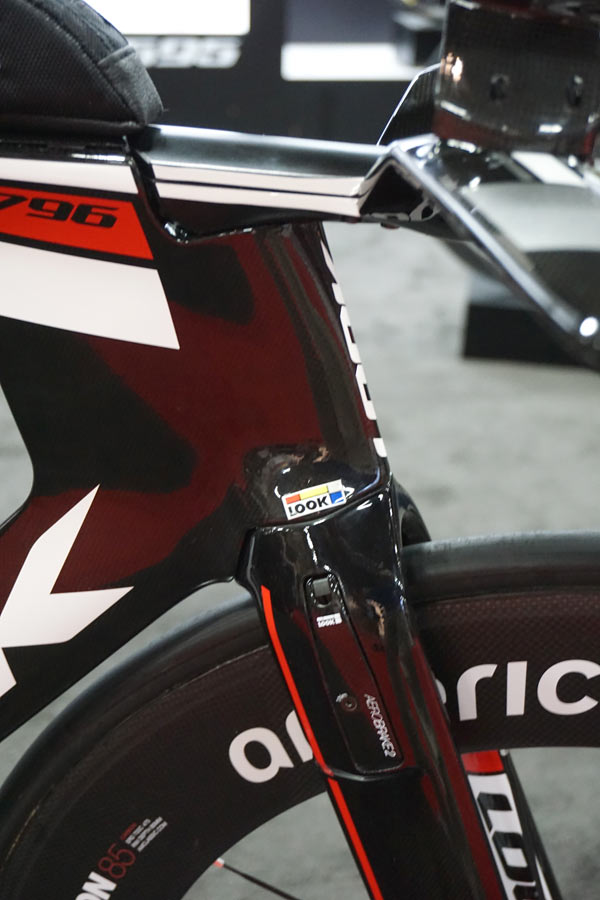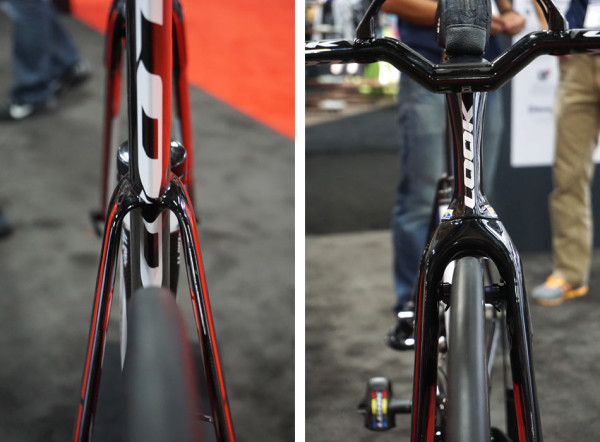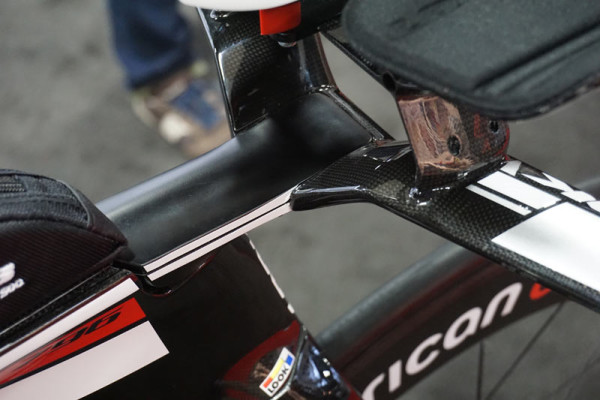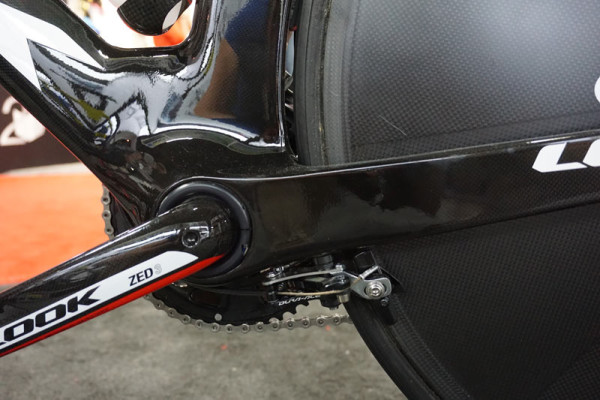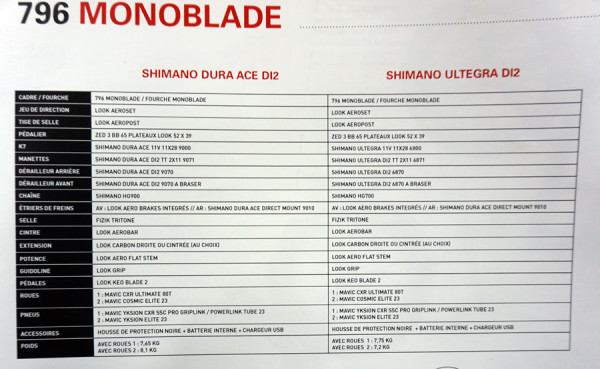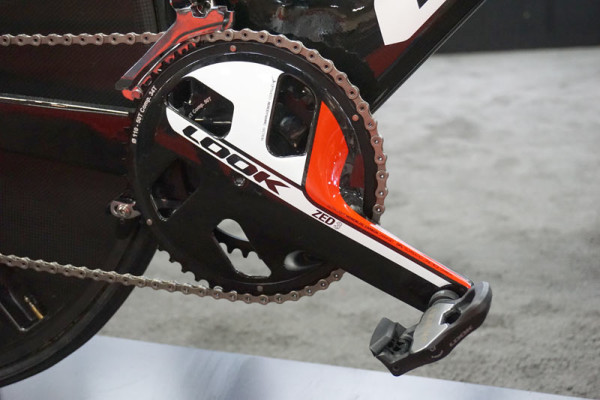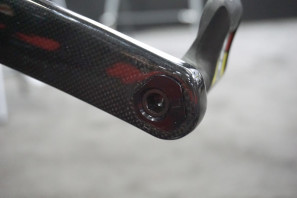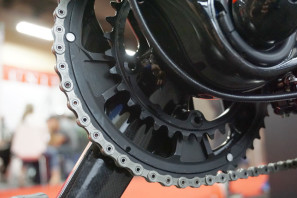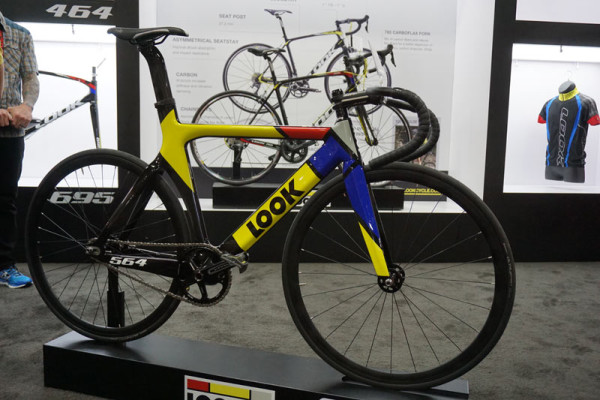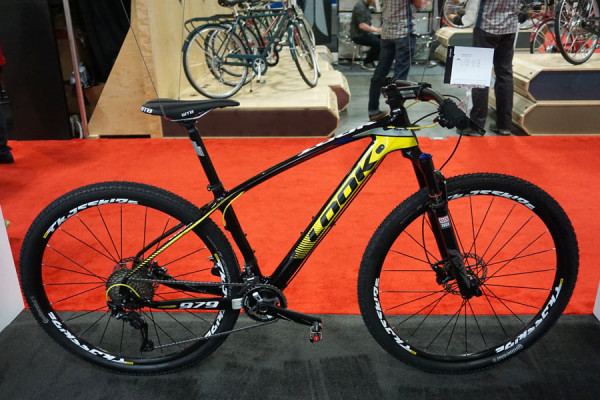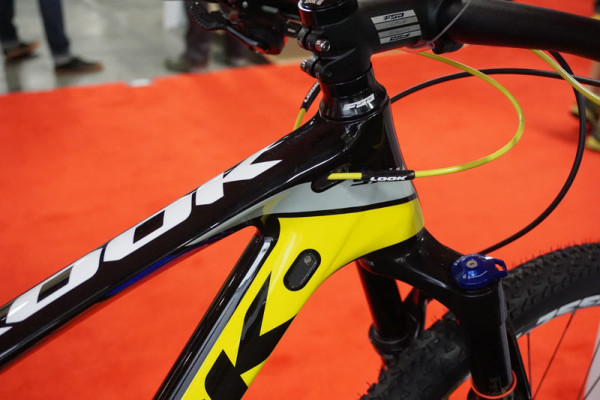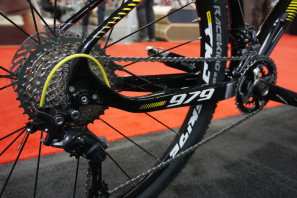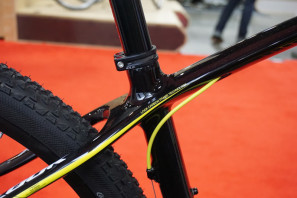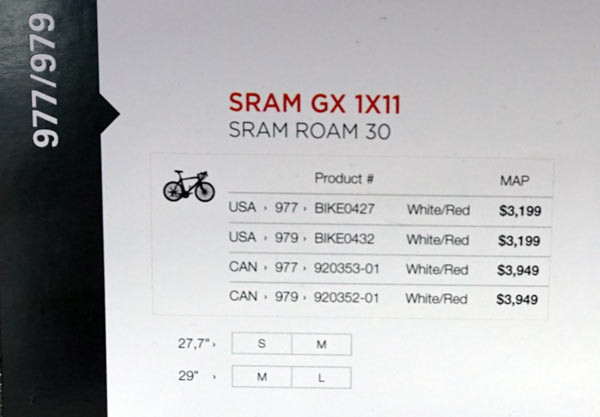The 2016 Look 765 endurance road bike replaces the 566 as the French brand’s mid-level long distance ride. It blends comfort geometry and frame materials with standard components (as opposed to the polarizing heavy cockpit integration found on their higher end 795 Aerolight and others).
Compared to their race bikes’ geometry, the 765’s endurance geometry averages a 20mm higher stack and 10mm shorter reach, putting you a bit more upright so you’re more comfortable over the long haul. Seatstays are a bit longer, too, to improve stability and take a bit of the edge off harsh bumps.
And then they add flax linen to the carbon…
There’s really no such thing as “low end” for Look, so even though this is among their least expensive bikes, it still gets a full carbon frame, including dropouts, internal cable routing and Monobloc construction.
The Carboflax material is a blend of flax linen fibers woven with carbon fibers on the chainstays and fork legs. One layer of the fabric is just under the top layer of carbon, which you see, and another is placed on the inside of the tubes to add more vibration damping.
Chainstays are asymmetric, putting a thicker, stronger stay on the driveside to handle the additional loads placed upon it. All cable routing is internal, and stops are removable to switch between mechanical and electronic ports.
Seatpost is a compliant 27.2. One thing missing is a disc brake option, which would be a nice addition to an endurance bike. At the moment, Look is one of the few remaining major brands without some sort of disc offering on the known horizon.
Four specs will actually be offered, with two mechanical Ultegra options – one with full Ultegra, and one using a 105 FD and FSA Gossamer crankset. Frame weight is a claimed 1,100g using their Monobloc carbon construction. Fork is 350g.
First spotted as a prototype in a wildly attractive (and not at all stealthy) logo wrap at the Tour de France, the completely new Look 795 Monoblade is the culmination of 12 years of parts integration by Look and a development process that included aerodynamicists from start to finish.
Built to be the fastest triathlon and TT bike on the market, it’s paper thin and completely hides 100% of the cables, housing and wires from tip to tip. None of them are visible from the outside.
Up front, the minuscule steerer is wrapped inside a virtually flat head tube with only the slightest flare to accommodate the lower headset bearing. Their Aerobrake 2 uses a cutout in the fork to hide the linear pull brake arms. We’ve ridden them on their road bike and, well, they work, but aren’t overly confidence inspiring on high speed descents. But for TT and Tri, they’re perfect.
The steerer tube tapers from 1-1/8″ at the bottom to 25mm (0.98″) at the top. The rest of the frame isn’t much wider.
The seat mast uses a unique sleeve design that slides over a raised seat tube. Seat height adjustments are done with a series of 1mm spacers (up to 12) that fit in directly under the saddle clamp section. This allows a new mast to be purchased if you sell the bike or cut it too short and means you don’t have to cut anything on the frame itself. It’s oval shaped, so you can flip it to position the saddle clamp fore or aft to change the offset, and two different offsets are available for a total of four positions. Their elastomer system is integrated to reduce vibrations.
The new Aeroflat handlebar uses a riser style shape that can be flipped up or down for a 50mm spread (+/-25mm from flat). It clamps into the stem, using a top cover plate that runs the length of the stem. The elbow rest supports bolt on and will come in different sizes.
The rear brake is a Shimano direct mount caliper placed under the BB.
A size small frame is claimed at 1,350g. The top model with Shimano Dura-Ace Di2 and Mavic Cosmic Elite will set you back a cool $16,999. Click to enlarge spec sheet for all the details.
Included on the Monoblade frame module is the all new ZED3 Aero full carbon, one-piece crankset. The entire piece -left and right arms, spindle- is a single unit that slides through the oversized bottom bracket hole on the frame, then gets pulled tight with threaded cups. They’ve used this design for years, and this is the latest, most aero and most versatile iteration yet.
The arms use their Trilobe inserts that allow for three different effective arm lengths by simply rotating them. Three arm lengths are available, resulting in a total of nine lengths: 155/157.5/160 – 162.5/165/167.5 – 170/172.5/175.
Another improvement to the design means you no longer need to remove the bearings during installation or removal. And, the spider is compatible with both 110 and 130 BCDs, so you can use any standard chainrings you want. All bolts are accessed from the inside, completely hidden from the outer carbon structure to minimize drag. The ZED3 will be spec’d on the 2016 795 Aerolight road bike, too, which carries over unchanged save for component spec.
The new 564 carbon fiber track bike takes geometry and performance cues from the top of the line L96, which integrates things a bit more (seatmast, etc.). The 564 still gets a full carbon aero seatpost, it just slides in in the traditional manner, and fork is full carbon, too.
It also goes with a standard crankset rather than the track edition of the ZED2 cranks. Get it as a frameset or with a SRAM Omnium kit, Formula Piste 16/18 tooth cogs on a reversible rear wheel, Zipp Service Course stem, Kalloy handlebar, Selle Italia saddle and Continental UltraSport tires.
If trickle down is the theme for much of Look’s 2016 lineup, the mountain bikes see it, too. The new 979 (29er) and 977 (27.5) carbon hardtails use Look’s carbon fiber experience to a less integrated bike to fill in beneath the 987/989 race bike. Like the higher end version, frames are available in two wheel sizes with frame size availability led by wheel diameter.
It still brings internal cable routing with Di2 and Sideswing compatibility. Geometry is built around a 100mm fork to yield 71.3º head angles on a 29er and 70.6 on the 27.5.
The frame uses high-mod carbon fiber and a Monobloc design, which puts a reinforcing gusset inside the tubes behind the steerer. Stiff chainstays and a PFBB89.5 direct power rearward and flattened seatstays take the edge off.
It was shown with a 2x Shimano group, but retail models will only come built with a SRAM GX 1×11 group, Roam 30 wheels, FSA cockpit and headset and Continental Race King Sport tires.
